
Eyeglasses duo
for viola and cello
Buy Viola in Music's Collection of
13 famous tunes
Read more
“Eyeglasses Duo” is the nickname, the short title for the Duet “with two eyeglasses obligato” (“mit zwei obligaten Augengläsern”, woo 32), a duo for viola and cello in E flat major by Beethoven.
Listen to the Eyeglasses Duo while you read
It’s not very clear why Beethoven gave the Eyeglasses duo its funny name. Beethoven wrote it around 1796-7, but it was published only in 1912. Most certainly he wrote it for his friend and cello player Baron Nikolaus Zmeskall von Domanovecz. Beethoven himself played the viola so it’s very likely that he intended the duo for them to play together.
Nikolaus Zmeskall was one of the first people Beethoven met when arriving in Vienna. He was secretary in the Hungarian Chancellery and remained Beethoven’s friend all his life.
He was a skilled amateur cello player and composer.
Zmeskall used to provide Beethoven with quills for his piano, wine and helped him in finding accommodations, correcting the proofs of his editions and doing many other things.
By reading his letters from this time I could also see Beethoven’s playful character, an aspect that I myself didn’t know, since Beethoven is always represented as stubborn, “angry”, fighting.
Yes, he was like this, especially, but not only, when he was young.
A possible explanation for the name
There are many letters that show how the relationship between them was close, intimate, and these letters are very different from the ones written to other friends or patrons. Beethoven calls him ‘Count of Music’, ‘Most beloved Conte di Musica’, Most excellent Count of Music’, ‘Baron (and still bachelor)’, teasing him in many ways.
In one of this letters he apparently teases Zmeskall for his short-sightedness, saying “je vous suis bien obligé pour votre faiblesse des votre yeux” (“I am most obliged for the weakness of your eyes”). This might explain the funny title of the eyeglasses duo.
So, if you were Beethoven, able to play viola, and had such a close friend, wouldn’t you play this duo with him?
If you haven't done it yet, click below to listen to this playful work.
Movements
The Eyeglasses duo is not complete, there is an Allegro movement (not indicated) and a Minuetto with Trio. I feel that with such a title, the Eyeglasses duo has to be played with a really playful attitude, exactly like two friends having fun, teasing each other.
The viola starts energetically with the theme, played immediately later by the cello. Through the whole movement the two instruments in turn play the theme and accompany each other, playing fragments one after the other and together, with also cantabile phrases accompanied by arpeggios.
Before the recapitulation (the repetition of the initial theme) there is a very nice play of alternated pizzicato and bow playing.
The Minuetto is a gentle movement, with phrases played in chords and in canon between the two instruments.
Some technical details
for cello players
The following part can be of interest to you if you are going to play the eyeglasses duo. There are a few editions, the main difference I noticed is in the cello part. For example, the Breitkopf edition has several passages in treble clef, in the very high register, while the IMC has the same passages written one octave lower.
The Breitkopf is more recent and in the preface the say that previous edition (by other publishers) contained errors. So I think that they printed the music exactly as Beethoven wrote it, but it may be wrong!
Now, I'm not an expert about cello performance practice but I found out something interesting when reading Berlioz’s Treatise on instrumentation and orchestration, where he gives information about each instrument.
Talking about the cello and the treble-clef, Berlioz says:
“… Before we proceed further, it is necessary to acquaint the reader with the double meaning of the G-clef in violoncello notation. If this clef occurs at the very beginning of a piece or directly after a bass-clef, the notes indicate the octave above the actual sounds:
The G-clef has its proper meaning only if it follows a tenor-clef (C-clef on the fourth line); only then does it indicate the actual tones, and not their higher octave.
There is nothing to justify this practice; it frequently leads to errors, since many violoncellists ignore it and always play G-clef according to its usual meaning. To avoid misconceptions, we shall use it here only after the tenor-clef, when the continued use of that clef would lead us too far beyond the stave.”
Berlioz published his treatise in 1843, describing a practice rather common at that time (and more in previous times). It's likely that this traditional practice was getting forgotten and Berlioz felt it necessary to clarify its use.
Which octave?
The higher cello register doesn’t make much sense especially in bar 141 in Breitkopf (138 in IMC, Breitkopf has a few extra bars), where the player would have to break the phrase to skip to the higher octave, as you can see from the first example.
Bar 141 in Breitkopf edition
Bar 138 in IMC edition
Also, here at a certain point the distance between the two instruments would be three octaves!
The IMC editions has only the first movement, though.
Anyway, if you want to play it, there are some other editions and whatever you choose, you know about the octaves issue and can decide how to play it.
Find CDs of Beethoven Eyeglasses duet duo and other chamber music works with viola.
Download Beethoven Eyeglasses duet free MIDI file of the whole composition, including the minuet and if you fancy playing it with a friend, you can buy the Eyeglasses duo sheet music.

Viola-in-music.com is recommended by the Encyclopaedia Britannica in its External Web Sites section
Go from Eyeglasses duo to Beethoven biography
Tweets by @MonicaCuneViola
Play easily without pain &
nerves
Related pages
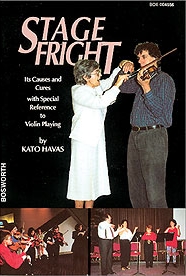 Read the book "Stage fright - Causes and cures", by Kato Havas, and play freely
Read the book "Stage fright - Causes and cures", by Kato Havas, and play freelyBuy Viola in Music's Collection of 13 famous tunes (19 pages)
£7.99 and download them instantly
They are in their original keys, so you can play them in sessions with other instruments
Jesu, joy of man's desiring
Michael Turner’s waltz (2 versions)
The
greenwood tree
The south wind
Fanny Power
Ye banks and braes
Skye boat song
My Bonnie
My love is
like a red, red rose
Sportsman’s hornpipe
The road to Lisdoonvarna
Danny Boy (Londonderry Air)
Iron legs
Do you like
Viola in Music?
Support it by buying sheet music here
Download Sheet Music
|
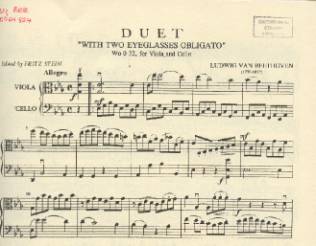

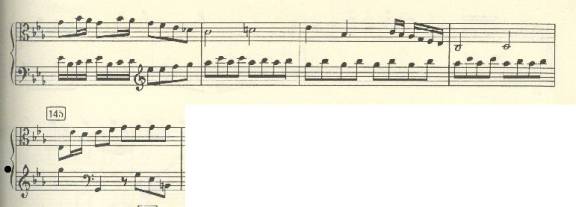
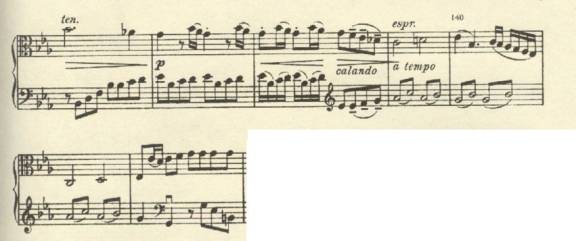
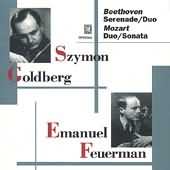
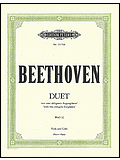




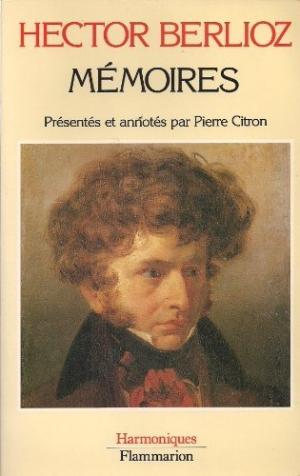
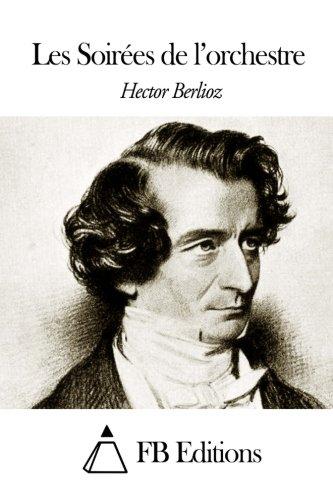
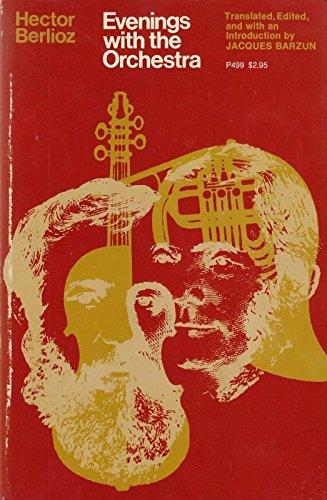
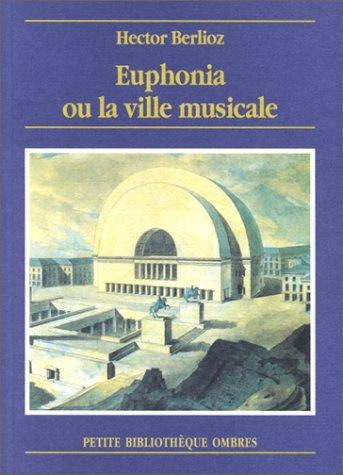
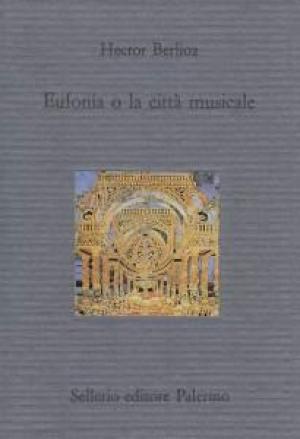
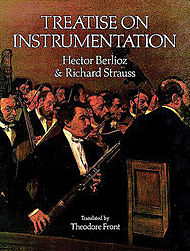
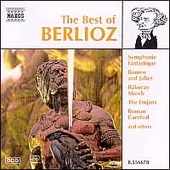
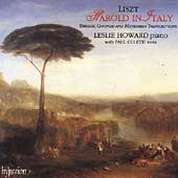
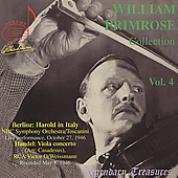
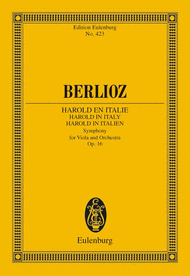
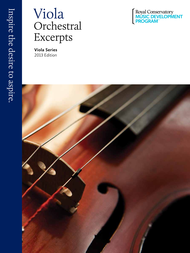
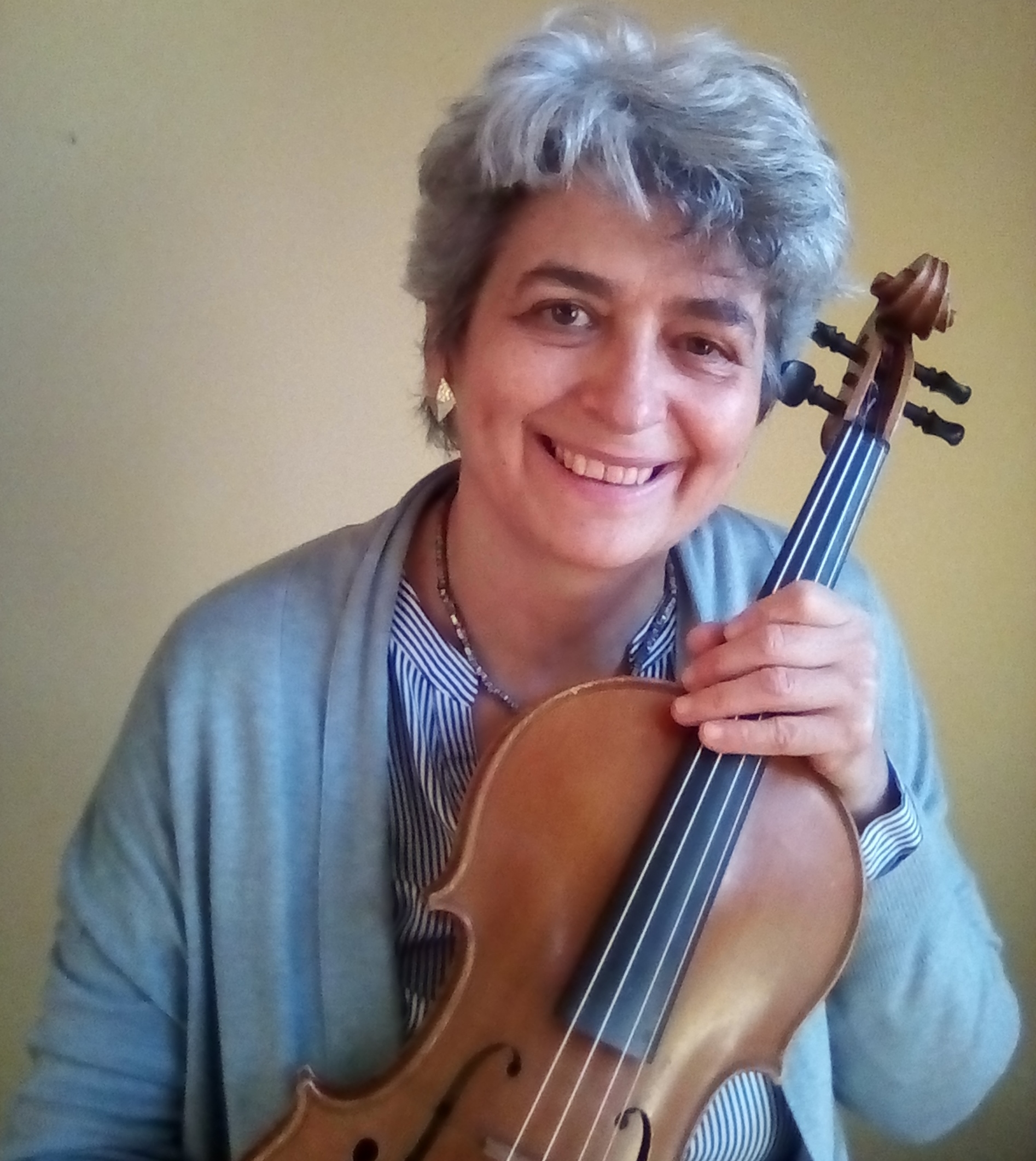



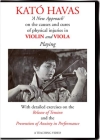
New! Comments
Have your say about what you just read! Leave me a comment in the box below.